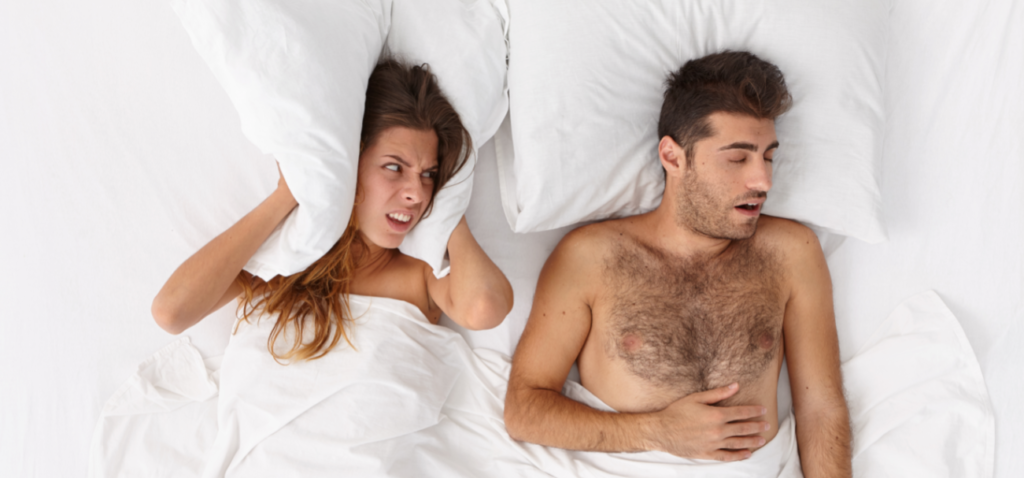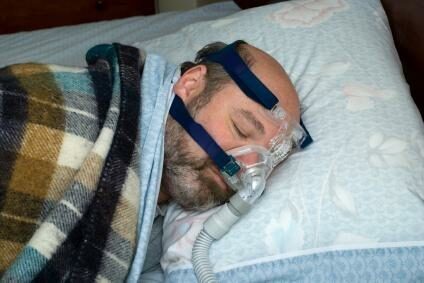Obstructive sleep apnea is common in people with atrial fibrillation. Up to half of all people with atrial fibrillation also have sleep apnea. Sleep apnea is found more frequently in patients with atrial fibrillation regardless of the usual risk factors: high blood pressure, obesity and diabetes. The recurrence of AF after DC conversion (electric shock to the chest to stop atrial fibrillation) is also more common in people with sleep apnea than without it. This raises a question: How does sleep apnea affect atrial fibrillation, and can we mitigate the problems?
There is evidence that dealing with sleep apnea can help improve the outcome of a DC conversion. An Australian study has demonstrated that people with sleep apnea have better outcomes if their sleep apnea is treated with CPAP. The effect is so positive that patients who have had CPAP treatment have just as good outcomes after DC conversion as those without sleep apnea.
This means that it will be important for physicians to understand whether their patient has sleep apnea or not before deciding to proceed with DC conversion treatment.
Sleep apnea (obstructive sleep apnea)
When you sleep, the muscles in your body relax, this includes the muscles in your throat. Your tongue will fall backwards, especially when you lie on your back, which leaves less space for air to flow. Sometimes this causes the spittle and soft pallet at the back of your mouth to vibrate, making you snore.
In extreme cases, there is so little space in your throat when you sleep that it completely closes. This means that the air cannot pass down into your lungs. Your brain, quite rightly, wants you to continue breathing, so your breathing muscles will still try to draw breath in. The result is that the pressure inside your chest increases significantly as your body cannot draw in any new air.
This causes the oxygen level in your blood to drop, and eventually your body will force air into your lungs and the concentration of oxygen will return to normal. These breaks in breathing can be quite long, especially for anybody trying to sleep next to you!

If you have sleep apnea, the breaks will typically be repeated many times during the night. It gives poor sleep quality, with very little “deep sleep”. Therefore, people with obstructive sleep apnea are often very tired during the day. This can result in a tendency to fall asleep during the day, or difficulty in concentrating.
There are different types of equipment that can be used to check if you have sleep apnea. If you (or your spouse) suspect you have sleep apnea, it would be a good idea to talk to your family doctor. You can then get a reference to an ear-nose-throat (ENT) doctor with an interest in sleep apnea.
Treatment of sleep apnea
Treatment of sleep apnea involves counteracting the collapse of the pharynx during breathing when asleep. Often, weight loss will help with the problem. Some also benefit from so-called snoring braces. A snoring bar is taken in the mouth when going to sleep. It works by pulling the lower jaw further forward, so that the space at the back of the throat is increased. Many will also benefit from treatment using a Continuous Positive Airway Pressure – also known as CPAP treatment.

CPAP Treatment can help ensure that you receive enough oxygen
CPAP treatment means that you are constantly breathing against a certain overpressure. You must use equipment consisting of a nose mask, an air hose and an air compressor. Via the nasal mask, a small overpressure is blown into the pharynx. This helps to prevent the collapse of the pharynx and thus keeps the airways open.
CPAP treatment is usually very effective and most people quickly get used to using the equipment. The improved quality of life in the waking state alone, which most people experience to a pronounced degree, is a good motivator to use the equipment. This also makes it a simple recommendation for physicians who want to ensure that their patients get the best outcome when seeking treatment for atrial fibrillation.